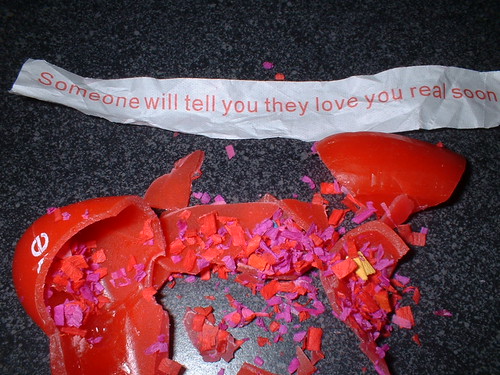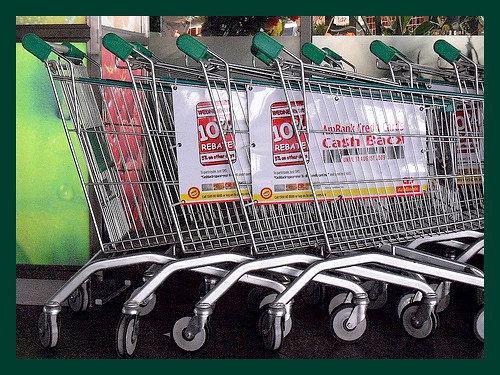Viewing posts categorised under: Customer Loyalty
 There is a reason over 85% of all marketers worldwide are using content marketing to generate more sales. On average, consumers engage with 11.4 pieces of content before making a purchase. Moreover, up to 80% of all users only focus on organic results and ignore all paid ads. Digital advertising has only 11% of the average business marketing budget today, while content marketing has 13% and is expected to only increase in the coming years.
Furthermore, email marketing is an ideal channel for promoting, distributing, and multi-purposing your content. Email and content marketing are natural complements - they go together as deliciously as
There is a reason over 85% of all marketers worldwide are using content marketing to generate more sales. On average, consumers engage with 11.4 pieces of content before making a purchase. Moreover, up to 80% of all users only focus on organic results and ignore all paid ads. Digital advertising has only 11% of the average business marketing budget today, while content marketing has 13% and is expected to only increase in the coming years.
Furthermore, email marketing is an ideal channel for promoting, distributing, and multi-purposing your content. Email and content marketing are natural complements - they go together as deliciously as
See more
 There’s an ongoing debate over the role of permission in sending marketing email to customers you have a pre-existing business relationship with. Although in recent years opt-in list building practices have clearly been on the rise, there is still no clear legal mandate for opt-in as a standard email marketing practice in the US and many countries.
There’s an ongoing debate over the role of permission in sending marketing email to customers you have a pre-existing business relationship with. Although in recent years opt-in list building practices have clearly been on the rise, there is still no clear legal mandate for opt-in as a standard email marketing practice in the US and many countries.
See more

Creative Commons License photo credit: Torley
You might read that title and wonder what in the world emotional connections have to do with online marketing or
any marketing for that matter.
Isn’t marketing simply about telling people what you have to offer and letting them know how to buy or work with you? Certainly it’s that, but much more. Whether you realize it or not, most decisions in life are fueled at least in part by emotion, and that goes for buying decisions large and small.
Our brains are equipped with both reasoning and emotional centers, and both factor into decision making. More often than not, people buy from emotion and justify with reason, so it’s important to know how to emotionally connect with them.
In online marketing, making emotional connections is especially important because the digital world can be fast, furious, and impersonal. There is a built-in immediacy in digital communication channels that often undermines or bypasses the opportunity to slow down the sale and deepen the consideration process that older, offline channels delivered. Plus, there’s a huge lack of trust (and fraud) in the digital world so allowing people to get to know you online goes a long way toward creating the confidence consumers and business people alike need before they're willing to buy.
So, is it easy to create emotional connections online? The good news is “YES!” thanks largely to social media and content publishing platforms that are faster, simpler and more accessible than ever before.
So, how do you do it? See more

photo credit: Berto Garcia
. Perhaps stemming from our pioneering roots we equate bigger with better, have a preference for more vs. less (even if it’s far more than we need), and value limitless expanse. Whether it is due to this mentality or other reasons, a similarly pervasive way of thinking has been the mindset in direct marketing for decades.
Yet in an age of awareness about how unfettered human expansion has negatively impacted the environment, times are changing. Sustainability and austerity are in, conspicuous consumption is out. There’s a clear quality over quantity movement underfoot and already visible in social media. I for one say it’s high time this shift made its way fully into email marketing.
See more

photo credit: mscaprikell
: just send them the same type of message repeatedly and you’ll succeed. We're often guilty of this when we send our e-newsletter and little (or nothing) else. And while a newsletter
absolutely has a place as a staple in your email marketing program, it should be far from the only type of message you send your customers on a regular basis.
See more
The U.S. Census Bureau releases the results of its 2010 census this summer and marketers are advised to prepare for some major demographic shifts. In a recent interview I read of Peter Francese, consultant to advertising megalith Ogilvy & Mather and author of the research report 2010 America, I was surprised to learn:
See more

photo credit: mmatins
, at some point you've learned it is polite to say "Thank You". Not only is it proper etiquette, it's just downright considerate and gracious. Yet for marketers, saying thank you is about much more than just being polite. If you're in the business of building lasting, loyal customer relationships (and if you're not, please question why you're bothering to be in business at all) it's an essential practice that pays both monetary and good will dividends. Without it, you're both at greater risk of customer flight and a sitting duck for the competition.
See more

photo credit: doug_wertman
If yours is a services business, B-to-B firm or solo-entrepreneurship, this time of year it can certainly seem like all the marketing focus is on retailers. Yet just because retail eclipses other industries during the holidays doesn’t mean non-retailers can’t take a few lessons from retail marketers and employ similar strategies in their own communications, especially email.
In the spirit of the season, here are three email marketing lessons non-retail businesses can swipe and deploy from holiday retail marketers. Here’s hoping they enlighten your email for 2011!
Vary frequency and cadence seasonally
Retailers live and die by the holiday gift giving season (hence the term “black Friday” for the day after Thanksgiving, traditionally the biggest shopping day of the year on which many retail businesses that haven’t yet made an annual profit will go from “being in the red” to “being in the black”). Even before the days of e-commerce, holiday messaging was much more frequent than advertising done at other times of the year. This increase is easy to see in the email marketing frequency of retailers, which goes from monthly or weekly to as often as weekly or daily during November and December.
It may not be at holiday time, but chances are there is a period or there are seasons when it makes sense to increase
your See more

Creative Commons License photo credit: FindYourSearch
If you’re just tuning into this series,
Part 1 explored the difference between broadcast and triggered-email, explained the role of trigger-based email, and defined the fundamental characteristics that make it so powerful.
Part 2 took a deep dive into the first two of four must-have triggered-email campaigns no email marketing program should be without:
welcome and
re-marketing campaigns. Here in Part 3, we’ll wrap things up with a look at the last two of four essential triggered-email campaigns:
up-sell/cross-sell and
reactivation campaigns.
The Up-Sell/Cross-Sell: Are You Leaving Money on the Table?
Too many marketers think about email campaigns as singular blasts rather than as a
progression of offers and information interwoven into a conversation – a conversation designed to maximize customer lifetime value. There are plenty of
great tips for building ongoing engagement and loyalty with your list members here. Still, if you’re thinking in terms of “one and done” campaigns, it’s time to develop an up-sell/cross-sell trigger program.
Here are three types of up-sell/cross-sell triggered email campaigns to implement during or after the conversion process.
See more

Creative Commons License photo credit: Mooganic
If you’re just tuning into this series,
Part 1 explored the difference between broadcast and triggered-email, explained the role of trigger-based email, and defined the fundamental characteristics that make it so powerful. Here in Part 2 we’ll look at the first two of four must-have triggered-email campaigns no email marketing program should be without.
Welcome and Onboarding: Are You Saying Hello?
I like to think of email in the eyes of the recipient first and foremost as a
conversation marketing channel.
See more
 There is a reason over 85% of all marketers worldwide are using content marketing to generate more sales. On average, consumers engage with 11.4 pieces of content before making a purchase. Moreover, up to 80% of all users only focus on organic results and ignore all paid ads. Digital advertising has only 11% of the average business marketing budget today, while content marketing has 13% and is expected to only increase in the coming years.
Furthermore, email marketing is an ideal channel for promoting, distributing, and multi-purposing your content. Email and content marketing are natural complements - they go together as deliciously as
There is a reason over 85% of all marketers worldwide are using content marketing to generate more sales. On average, consumers engage with 11.4 pieces of content before making a purchase. Moreover, up to 80% of all users only focus on organic results and ignore all paid ads. Digital advertising has only 11% of the average business marketing budget today, while content marketing has 13% and is expected to only increase in the coming years.
Furthermore, email marketing is an ideal channel for promoting, distributing, and multi-purposing your content. Email and content marketing are natural complements - they go together as deliciously as 








